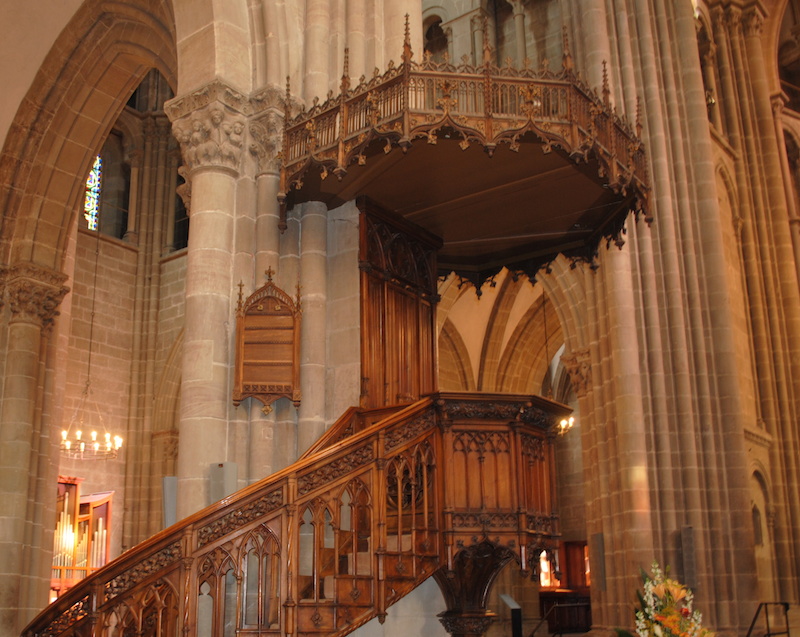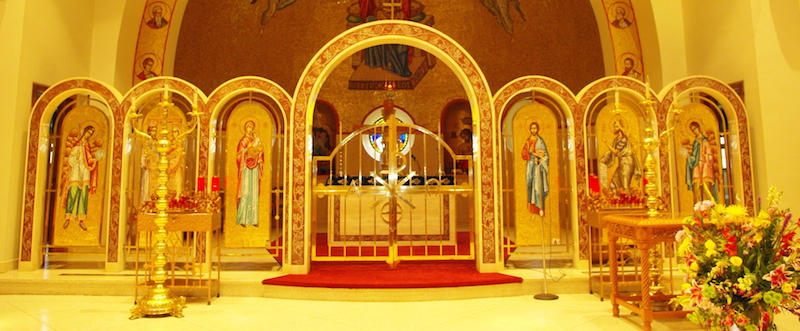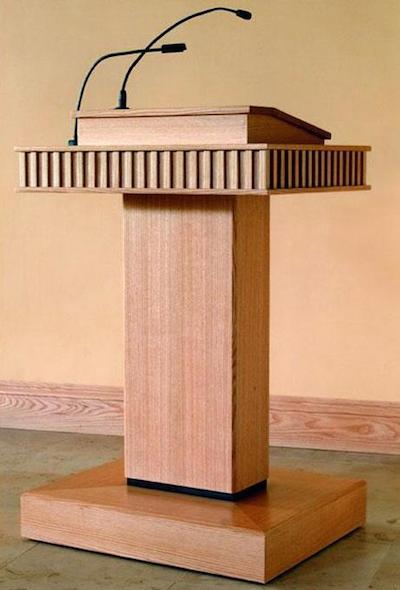Ambo or Pulpit?

If you’ve been reading my blog for a while now, you’ll know that a good portion of my posts either come from questions people have asked me or from my own wondering about a particular subject. Today’s post falls into the latter category…
When Jesus preached to the crowds, Scripture records that one time He ascended a mountain to teach them (Matthew 5:1) and on another occasion He got into a boat and moved a little way from the shore (Luke 5:3). There is theological significance to both of these actions, but there’s also a very practical reason that the Lord did this – He wanted His preaching to be heard clearly by as many people as possible.
The necessity to clearly hear the words of preaching continues today and we see it reflected in the architecture of our church buildings in the presence of a pulpit/ambo/lecturn.

For quite a while, I’ve noticed that Catholic liturgists typically use the word “ambo” to describe the preacher’s platform, rather than “pulpit”, which you hear more often both in the Protestant world and in popular culture. However, is there really a difference between “ambo” and “pulpit”, or is this just a case of Catholic/Protestant “potato/potahto”?
Technical Definitions
So, I did a little bit of research. The history behind the ambo in particular is fascinating and would be well worth another post at some future date. In my reading I found some level of disagreement concerning definitions, particularly if one bases the definition off liturgical use, since this has changed somewhat overtime. So, to keep things simple, I’m going to give definitions based purely on architecture…
The key difference between an ambo and a pulpit is that a pulpit surrounds the preacher and is attached to the church building, usually by a pillar:

In contrast, the ambo is freestanding. Traditionally, it looked like this:

…but nowadays they look like this:

It’s worth noting that in the Eastern Churches, the ambo is simply the semicircular extension in front of the Royal Doors:

Before ending this post, a word should probably also be said about lecterns. The word comes from the Latin, meaning “to read”. A lecturn is simply a portable stand, often sitting on a podium, which is simply a portable box to raise the lecturn.

Of course, all these words are often used interchangeably, but if you’ve ever been curious about the technical differences between each them, now you know!
I would like to know if the different parts of a pulpit are named, or have names. I know they vary in form, but I’m referring to the area where the speaker stands, the section below that platform (often tapered), the base (connected to the floor), the sides that enclose the platform, etc.
If there are official names for the different parts, I’m afraid I don’t know them.